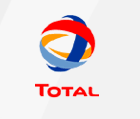The 7 research teams involved in CRYSTAL2PLATE cover the entire range of methods and scales essential for investigating the dynamics of the Earth: (1) the characterization of deformation and chemical exchanges by direct analysis of geological objects, (2) indirect seismological and geochemical probing of the mantle composition, temperatures, and deformation, and (3) numerical, theoretical, and laboratory modelling of deformation, thermal evolution, and chemical exchanges from the crystal to the convection scales.
• Geosciences Montpellier (coordinator) is a University of Montpellier 2 – CNRS joint research unit has a double expertise in: (i) the analysis of the deformation and of its effects on the physical properties at all scales by associating observations in natural rocks, experiments, seismic anisotropy measurements and modelling and (ii) the study of fluid-rock reactions in the mantle through in-situ geochemical analyses and modelling.
• The seismology group at the Universiteit Utrecht is involved in a wide spectrum of research activities in observational and theoretical seismology with a two-fold objective: (i) determining spatial variations in elastic anisotropy, density and major seismic discontinuities, and (ii) understanding the pertinent results in terms of temperature, mantle mineralogy and mantle evolution.
• The Earth Sciences Department of the University of Bristol reunites specialists in a wide range of complementary techniques in geophysics and geochemistry, ranging from seismology to high-precision measurements of volatiles and isotope ratios.
• The Department of Earth Sciences of the Eidgenössische Technische Hochschule Zürich (ETH ZURICH) brings together expertise in multi-scale, multi-rheological numerical modelling of lithosphere and convective mantle dynamics and in petrology, in particular, thermodynamics and fluid migration processes.
• The Laboratoire Fluides, Automatique et Systèmes Thermiques (FAST) is a CNRS-Université Paris 6 – Université Paris Sud joint research laboratory specialized in problems of fluid mechanics, soft matter and heat transfer, with applications in engineering as well as geophysics. Its geodynamic group is well known for its expertise in theoretical, numerical and laboratory modelling of mantle convection.
• The Laboratory of Experimental Tectonics of the University “Roma TRE” reunites expertise in tectonics and geodynamics and up-to-date laboratory facilities for analogue modelling of subduction processes.
• The Instituto Andaluz de Ciencias de la Tierra is a Consejo Superior de Investigations Cientificas (CSIC) - Universidad de Granada joint research laboratory that brings together expertise on petrology, geochemistry, and structural geology, associating observations on natural systems with thermodynamic modelling and experimental petrology studies.
Associated industrial partners complete the network. They will participate in the training via specialized courses and via seminars/visits that illustrate the possibilities of transfer of knowledge between academia and industry and/or the organisation/management in an SME.
Senior Participants & Institutions
| Network Participants | Legal Entity (acronym, country) | Department | Person in charge |
|---|---|---|---|
Andréa Tommasi |
Université de Montpellier (UM2, F) |
||
| J. Michael Kendall Tim Elliott George Helffrich James Wookey |
University of Bristol (Bristol, UK) |
||
| Hanneke Paulssen |
|||
| Paul Tackley James Connolly Taras Gerya Boris Kaus |
|||
| Anne Davaille Neil Ribe |
CNRS (FAST, F) |
||
| Claudio Faccena Francesca Funiciello |
Universitá Roma TRE (Uniroma TRE, I) |
||
| Carlos Garrido | |||
| Associated partners | |||
 |
Exploration-Production Geosciences/Projets Nouveaux |
Patrick Unternehr |
|
 |
n/a |
Alexandra Haase- Schramm |
|
 |
n/a |
Martin Dutko |
|
 |
University Relations Dept. for Europe & Africa |
Yves Morel |
